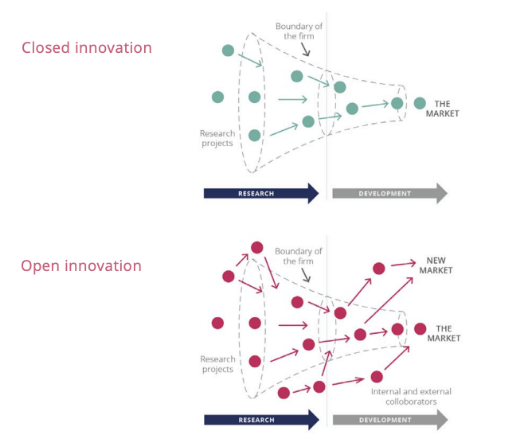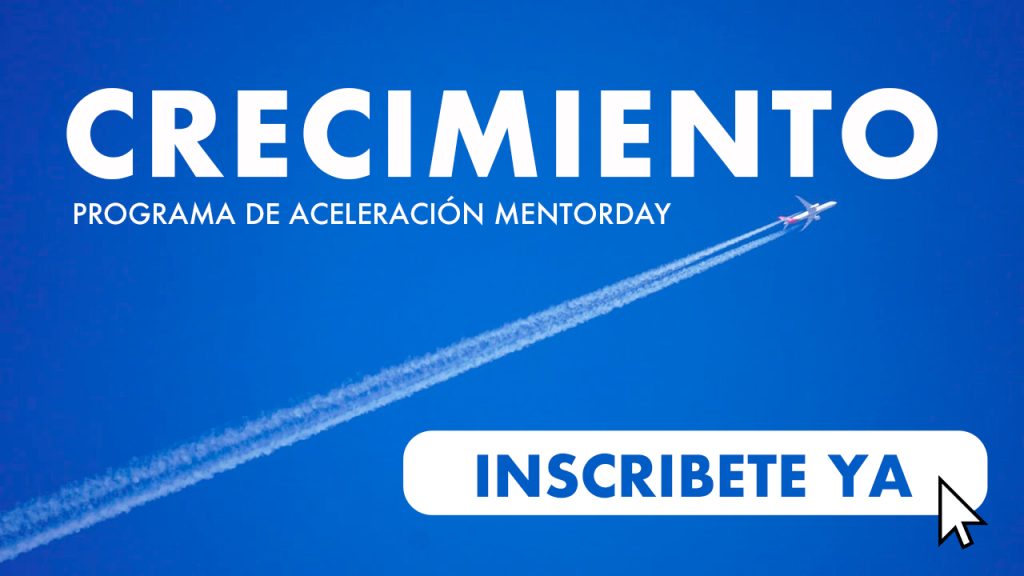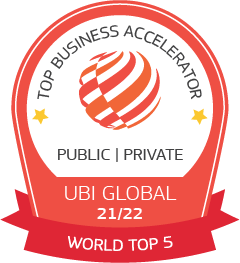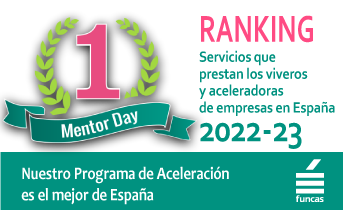OPEN INNOVATION
Accelerate your business with these expert tips on "Open Innovation". Analyse and discover this TIP!
To better understand what open innovation is, we ask you to ask yourself the following question and answer as honestly as possible:
Where is there more talent: inside or outside your organisation?
This is the key idea of open innovation. The open innovation system proposes a new innovation strategy whereby companies go beyond their boundaries and develop cooperation with external organisations or professionals.
It means combining internal and external expertise to drive strategy projects forward.
Advantages for companies working under the open innovation model:
- R&D projects: reduce time and costs, and capture innovative solutions and ideas that would never have been developed in-house due to lack of time, methodologies, knowledge and/or technological means.
- They incorporate innovation from external organisations (technology companies and research centres) in the form of ideas, patents, technologies and products (technology transfer).
- They market easily the innovation generated by the R&D department.
To implement this innovation management model, there are innovation intermediaries, marketplaces that act as a meeting point between companies and external knowledge.
In short, we could say, therefore, that open innovation is the approach by which an organisation markets. Both their own ideas and those generated in other organisations, and looks for ways to bring them to the market.
They can use the channels that are either its own, or using channels that are outside its current business. With open innovation, organisational boundaries become permeable, more liquid. Enabling the relationship and integration of the company's resources with others from both ends of the organisation itself.

Open innovation is a business approach that seeks to generate ideas, solutions and collaborations through the participation of external actors, such as customers, suppliers, universities and entrepreneurs. Unlike the traditional closed innovation approach, where companies develop ideas internally and keep them secret, open innovation is based on sharing knowledge, resources and technologies with the aim of accelerating the innovation process and obtaining better results.
Open innovation is based on the following principles:
- Collaboration: Seek and establish partnerships with external actors that bring complementary expertise and fresh perspectives.
- Co-creation: Involving customers, users and other stakeholders in the creation and development of products and services.
- Knowledge sharing: Sharing information, technologies and best practices with other actors to generate synergies and accelerate the innovation process.
- Adaptability: Be open to change and to the adoption of external ideas and solutions that can improve the company's performance.
- Flexibility in organisational boundaries: Do not limit yourself to the boundaries of your organisation, but explore collaborations with other companies, startups and external entities.
Open innovation can take many forms, such as collaborating on joint research projects, participating in startup accelerator programmes, acquiring external technologies or startups, collaborating with universities or organising open challenges to solve problems.
Implementing open innovation can help companies access new ideas and knowledge, reduce development costs and risks, increase the speed of innovation, improve competitiveness and strengthen customer relationships. It also fosters collaboration and knowledge sharing in the business ecosystem and stimulates the creation of disruptive solutions that are better suited to market needs.
Here are some practical examples of open innovation:
- Startup accelerator programmes: Many companies launch accelerator programmes in which they invite startups to present their ideas and solutions. Those selected receive financial support, mentoring and access to company resources to develop and validate their projects. This allows the company to identify promising new technologies and business models and establish relationships with talented entrepreneurs and teams. https://mentorday.es/programas/modelo-mentor-day/
- Collaboration with universities: Companies can enter into partnerships with academic institutions to carry out joint research projects. The university provides expertise and resources, while the company offers market experience and the practical application of research results. This collaboration can lead to the development of new technologies, products or services.
- Open innovation platforms: Some companies create online platforms where they invite users, customers and other stakeholders to contribute ideas, suggestions and solutions to specific challenges. These contributions can be evaluated and rewarded, which encourages active participation and knowledge sharing. A famous example of this is Starbucks' "My Starbucks Idea" programme, where customers can submit ideas for improving the in-store experience.
- Hackathons and co-creation events: Organising hackathons or co-creation events is another form of open innovation. These events bring together people with different skills and expertise to collaborate on idea generation and prototyping in a short period of time. It is a great way to tap into external talent and come up with innovative solutions in a collaborative and dynamic environment. https://mentorday.es/wikitips/hackathon/
- Startup acquisition: Instead of developing new technologies or products internally, some companies choose to acquire startups that have already developed innovative solutions. This allows them to quickly access talented technologies and teams, accelerating their innovation process and expanding their product or service portfolio.
These are just a few examples of how open innovation can be applied in practice. Each company can adapt these approaches to their specific industry and needs to drive their innovation process and achieve successful results.
Open innovation offers several advantages for startups. Here are some of them:
- Access to external resources and expertise: Open innovation allows startups to access resources and expertise that are not available internally. They can collaborate with external partners, such as other companies, universities, investors or industry experts, to gain additional information, experience and support.
- Broadening the scope and diversity of ideas: By involving outsiders in the innovation process, startups can get a wider variety of ideas and perspectives. This helps to avoid groupthink and encourages creativity and originality in generating solutions.
- Reduced costs and risks: Open innovation allows startups to share the costs and risks associated with research and development. By collaborating with external partners, they can split costs and mitigate financial risks. In addition, by leveraging the knowledge and experience of others, they can avoid making costly mistakes and accelerate their development process.
- Accelerating time to market: By collaborating with external partners and using external resources, startups can accelerate the development and commercialisation of their products or services. They can leverage existing capabilities and assets rather than building everything from scratch, allowing them to get to market faster and gain a competitive advantage.
- Increased visibility and access to opportunities: Open innovation provides startups with greater visibility in the market and gives them the opportunity to establish connections and relationships with other companies, investors and relevant stakeholders. This can open doors to new business, funding and growth opportunities.
In short, open innovation gives startups access to external resources, knowledge and opportunities that can accelerate their growth and increase their ability to innovate effectively. It allows them to tap into collective wisdom and collaborate with others to generate stronger, more competitive solutions.
Open innovation offers several advantages for corporations or large companies. Here are some of them:
- Access to external ideas and talent: Open innovation allows corporations to access a broad pool of external ideas and talent. They can collaborate with startups, entrepreneurs, universities and other organisations to gain new perspectives and fresh insights. This helps avoid stagnation and fosters creativity and innovation in the company.
- Greater agility and flexibility: By opening up to external innovation, corporations can be more agile and flexible in their approach. They can take advantage of emerging ideas and technologies without having to develop everything internally. This allows them to adapt quickly to market changes and stay at the forefront of the industry.
- Reducing costs and risks: Open innovation allows corporations to share the costs and risks associated with research and development. By collaborating with external partners, they can split costs and mitigate financial risks. In addition, by leveraging the knowledge and experience of others, they can avoid making costly mistakes and accelerate their innovation process.
- Expanding market opportunities: By collaborating with external companies and entrepreneurs, corporations can explore new market opportunities and expand their portfolio of products or services. They can identify unserved market niches and leverage the expertise of external partners to develop innovative solutions that meet customer needs.
- Improving the culture of innovation: Open innovation fosters a culture of innovation within the corporation. By involving employees, customers and external partners in the innovation process, it promotes collaboration, exchange of ideas and continuous learning. This helps to create an environment conducive to the generation of new ideas and the implementation of innovative solutions.
In short, open innovation provides corporations with access to external ideas and talent, market agility, reduced costs and risks, expanded opportunities and an improved innovation culture. It allows them to leverage diversity and external expertise to drive growth and maintain their competitive position in an ever-changing business environment.
ChatGPT can help open innovation in a number of ways:
- Idea generation: The ChatGPT can generate innovative ideas and concepts based on the information provided. You can ask the model questions related to specific innovation challenges and get creative suggestions that can inspire new solutions.
- Data analysis: ChatGPT can analyse large volumes of data and extract relevant information. This can be useful to identify trends, patterns or insights that can guide the open innovation process. You can provide data or make queries related to market analysis, customer preferences, competitors, etc.
- Partner or collaborator search: ChatGPT can help in the search for external partners or collaborators for open innovation. You can describe the type of collaborator or partner you are looking for, the selection criteria and the collaboration model you wish to establish. The model can provide recommendations or suggestions of organisations or individuals who could be potential collaborators.
- Advice on innovation strategies: You can ask for advice on open innovation strategies, such as the implementation of accelerator programmes, hackathons, idea competitions, among others. ChatGPT can provide recommendations and best practices for designing and executing successful open innovation programmes.
- Exploring emerging technologies: ChatGPT can keep you up to date on the latest trends and technological developments. You can get information on emerging technologies relevant to your industry and explore how they could be applied in your open innovation process.
It is important to keep in mind that ChatGPT is an artificial intelligence tool and its ability to assist in open innovation is based on its prior knowledge and the information provided. It is always advisable to complement its information with human experience, expert analysis and the active participation of multidisciplinary teams in the open innovation process.
APPLY THIS TIP TO YOUR PROJECT
TASK
NOW THAT YOU HAVE LEARNED ALL ABOUT OPEN INNOVATION, REFLECT ON THESE QUESTIONS:
- What benefits can you get for your project by applying open innovation with a corporation?
- Do you know of corporations or large companies that are organising open innovation events that might be of interest to you?
CASE STUDY
Name of entrepreneur: Ana
Context: Ana is an entrepreneur who has launched a technology startup focused on developing sustainable mobility solutions. Her company has experienced promising initial growth, but Ana is looking for ways to further accelerate its growth and stay at the forefront of the industry. She has decided to take advantage of open innovation to drive her company forward and establish strategic partnerships.
Objective: Ana's goal is to leverage open innovation to gain access to new knowledge, resources and opportunities that will drive the development of her startup and position it as a leader in the sustainable mobility market.
STEPS TO FOLLOW:
- Identifying challenges: Ana identifies the key challenges her company faces, such as improving the energy efficiency of its products, developing new innovative features and expanding its distribution network.
- Connecting with open innovation communities: Ana joins open innovation communities and platforms in the sustainable mobility sector. These communities give her access to a network of experts, entrepreneurs and companies in the field of sustainable mobility.
- Call for collaboration: Ana is launching an open call through its online platform and social media, inviting startups, researchers and practitioners to collaborate on specific projects. These projects could address the identified challenges and seek innovative solutions.
- Selection of collaborators: Ana reviews the proposals received and selects the most promising collaborations. These may include startups that have already developed complementary technologies, researchers who have expertise in relevant areas or companies with experience in distribution and commercialisation.
- Joint development of solutions: Ana works closely with selected partners to develop innovative solutions. This involves sharing knowledge, exchanging ideas and working as a team to overcome identified challenges.
- Testing and validation: Developed solutions are tested and validated in real conditions. Ana conducts pilot tests in collaboration with strategic partners, customers or end users to gather feedback and make adjustments.
- Implementation and scalability: Once the solutions have been successfully validated, Ana implements the improvements in its products and processes. It seeks opportunities for scalability and expansion by partnering with distributors, suppliers or investors interested in its business model and vision of sustainable mobility.
OUTCOME:
Thanks to open innovation, Ana is able to accelerate the growth of her startup. Collaborations with experts and companies in the field of sustainable mobility give her access to new ideas, technologies and resources.
In addition, establishes strategic alliances that expand its distribution network and provide opportunities for expansion. Your company becomes a benchmark in the sustainable mobility market, offering innovative solutions and leading the way towards a more sustainable future.
QUIZ
- 💻 PRACTICE with an expert in the next practical webinar.
- 🔎 CONSULT more related TIPs with this same theme.
- 📖 AMPLIA your knowledge by downloading this EBOOK y this EBOOK.
THINK ABOUT YOU
- 🚀 IMPULSA your company in the next acceleration programme, ¡book your place now!
- 🥁 PRACTICE with your project in this practical webinar, ¡apply for your place!
- 🌐 CONTACT with other entrepreneurs and companies, ¡register and take part in the next Networking!
THINK ABOUT HELPING OTHERS
- 🤝COLLABORATE as a volunteer: expert, mentor, inverter, awarding, Spreading the word, challenging, innovating, creating a TIP...
- 💬 RECOMMENDS this programme to reach out to more entrepreneurs by Google.
- 👉 SHARE your learning!
- 📲 SEND this TIP 👇
Rate this TIP!
Click on the stars to rate
Rating "38" - Average " - Average4.4"
No votes yet, be the first to vote!
We are sorry you did not find it useful.
Help us improve this TIP!
Leave us a comment and tell us how you would improve this TIP










